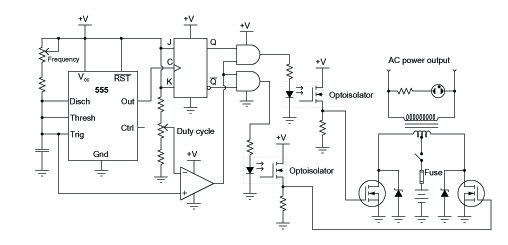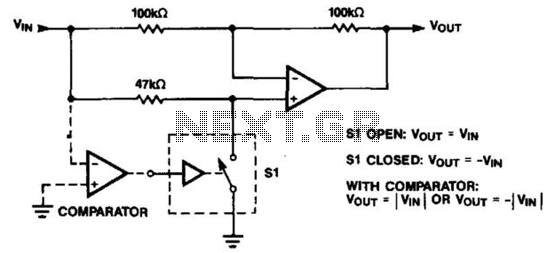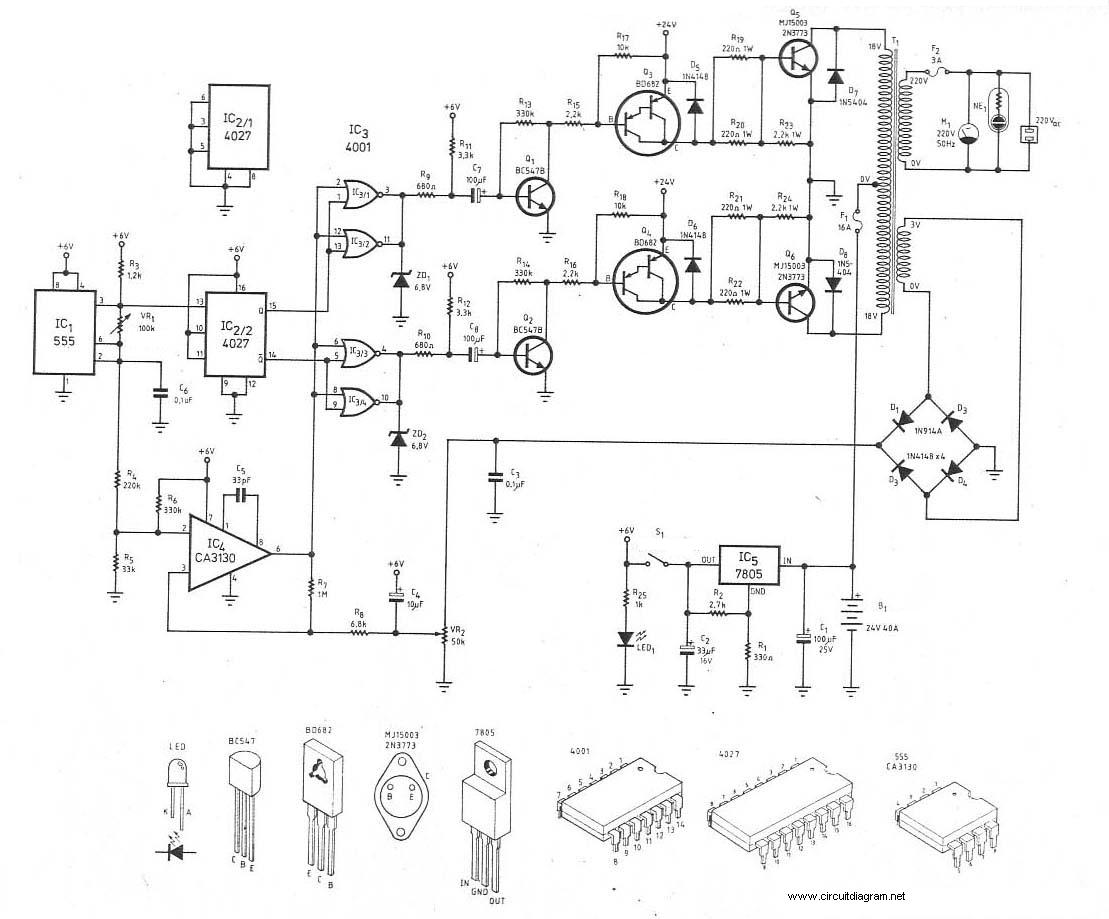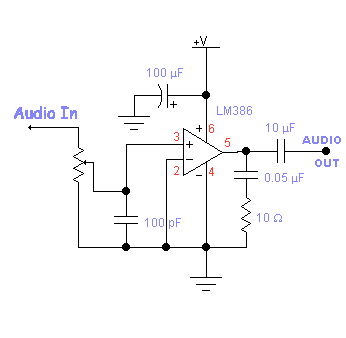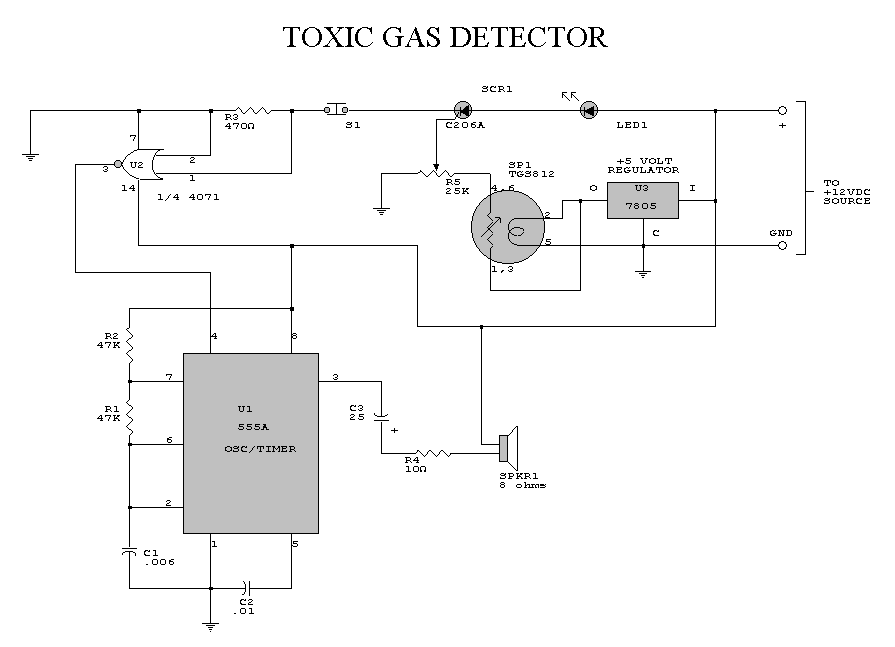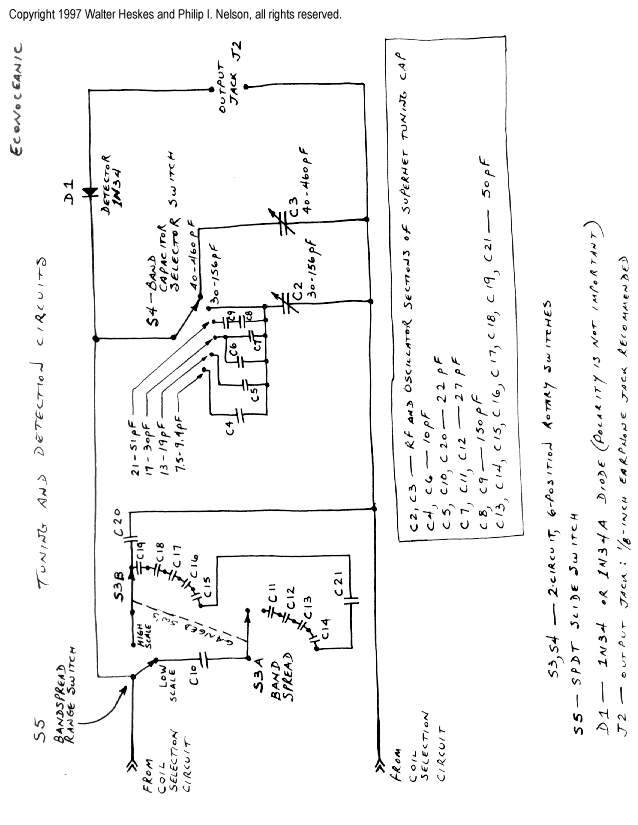
how to build an inverter
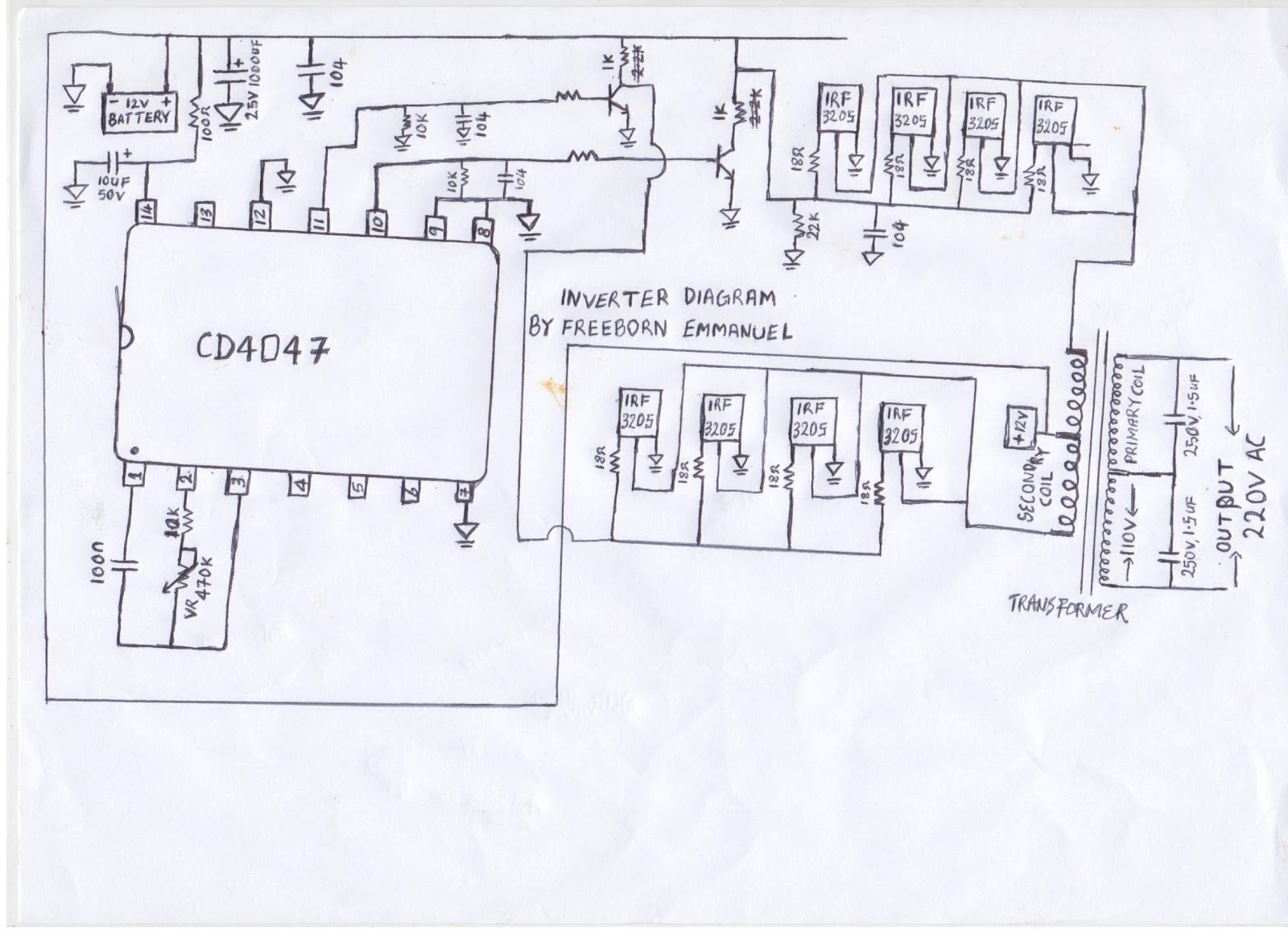
Emmanuel is involved in the design of inverters, battery chargers, automatic changeovers for generators, and stabilizers. He designs locally made inverters for residential and commercial use and installs solar panels alongside inverters. Additionally, he creates solar charge controllers and engages in extensive research and experimentation related to inverter designs and other electronic circuits. Emmanuel provides maintenance services for electrical systems and assists students with their projects. An inverter is an electronic device that converts DC (direct current) into AC (alternating current). It serves as a silent power generator capable of powering homes, offices, and various electrical appliances. For instance, to power a TV using a car battery, an inverter is necessary to transform the 12V DC from the battery into usable 220V or 120V AC. Inverters can discharge batteries gradually, necessitating the use of a battery charger for recharging once the battery level is low. Some inverters are equipped with automatic features, allowing them to switch on during power outages and resume charging once power is restored. However, not all automatic inverters are equipped with charge control, which can lead to overcharging or slow charging of batteries.
Inverters can be classified based on their output waveforms. Sine wave inverters produce a smooth output waveform suitable for sensitive appliances, while square wave inverters are better suited for devices like electric heaters and filament bulbs. An inverter oscillator is a circuit that converts DC to AC at low currents, serving as the initial stage of conversion. The output of the inverter oscillator determines whether the inverter produces a sine wave, modified sine wave, or square wave. Additionally, a pulse modulation oscillator can maintain a consistent output voltage regardless of load variations, enhancing the inverter's performance. Power transistors amplify the AC current from the oscillator to a higher capacity, with the choice of transistor depending on the desired inverter capacity. For instance, a 500W inverter with a 12V DC input may use specific MOSFETs known for their low input voltage and high current handling capabilities. The transformer in the inverter boosts the voltage from the MOSFET output to the required level for the inverter output.
An inverter is an essential electronic device that converts direct current (DC) into alternating current (AC), enabling the use of battery power to operate household and office appliances. The fundamental operation of an inverter involves taking a DC voltage, typically from a battery, and converting it to a higher AC voltage suitable for various applications. For example, a 12V DC battery can be transformed into 220V or 120V AC using an inverter, making it possible to power devices that require AC input.
The inverter's design can vary significantly based on its intended application. Inverters can be equipped with features such as automatic switching capabilities, allowing them to detect power outages and switch to battery power seamlessly. This automatic function is critical in ensuring continuous operation of essential devices during power interruptions. However, the effectiveness of these features can depend on the specific design and specifications of the inverter.
Inverters are categorized by their output waveform, which affects the types of appliances they can effectively power. Sine wave inverters produce a clean and smooth waveform, making them ideal for sensitive electronics, such as computers and audio equipment, which may be adversely affected by noisy power. In contrast, square wave inverters generate a more rugged waveform that may be suitable for simpler devices, such as electric heaters and incandescent bulbs, but are generally not recommended for devices that require stable power.
The inverter oscillator plays a crucial role in the functioning of an inverter. It is responsible for the initial conversion of DC to AC and determines the output waveform. The design of the oscillator can influence the inverter's efficiency and stability. Using a pulse modulation oscillator enhances the inverter's ability to maintain a consistent output voltage, even as the load changes, which is essential for reliable operation.
Power transistors within the inverter amplify the AC signal generated by the oscillator. The choice of transistor is critical, as it must be capable of handling the desired power levels. For high-capacity inverters, selecting appropriate MOSFETs is vital to ensure efficient operation. The transformer in the inverter then steps up the voltage to the required level for output, completing the conversion process.
Overall, the design and functionality of inverters are influenced by various factors, including the type of oscillator used, the choice of power transistors, and the transformer specifications. These elements work in concert to create an efficient and reliable power conversion system capable of meeting the needs of various applications.am freeborn Emmanuel, am into inverter, battery charger and automatic change over for generator and stabilizer designing. i do design locally made inverter for house and office use and i do install solar panel with inverter, i do design solar charge controller and lots more.
all this are product of herd work and passion. am so passionate about ren ewable energy and i enjoy spending much time at home making research and experiment of all type of inverter design and other electronic circuit and am quick in understanding and am very smart, if i should tell the story how it all started it well be so unbelievable but you see with so much passion and herd work and above all faith in God i can now design an inverter and other use full electrical system for my self and for friends and other people who need my service, i also do maintenance on electrical system, and i do help student with there project and lots more. what is an inverter. inverter is an electronic system that convert DC (direct current) in to AC (alternating current). inverter is a noiseless power generator and it can be use to power home and office and other electrical appliances.
how it work is very simple if you have a battery lets say a car battery and you want to power your TV set with your car battery you will need an inverter to convert the current from the battery which is 12V DC current into a useful 220V or 120V AC current. when using an inverter to power any electrical appliances the battery which is the main source of energy will be discharging little by little and after some time the battery will discharge to a point that the inverter will have to short it self down because of low battery in that case you will have to use a battery charger to recharge the battery back to normal.
some inverter are automatic which means the inverter turn on automatically when there is power outage and when power is restore it automatically switch to standby mood and start charging the battery. some automatic inverter with in-build charger do not have charge control some can overcharge the battery and some are very slow when charging but many automatic inverter in the market have battery full cut off and some are not too slow when recharging battery it all depend on the product and specification design of the inverter.
some inverter do have in-build charger but are not automatic, you will have to torn off the inverter and then switch on the charging switch before it can start charging and you have to change over your load manually. some inverter do not have charger and are not automatic its just an inverter that convert DC to AC nothing else added to it.
all this have to do with design specification. A sine wave inverter have a smooth output wave form, how do you know this when you use a sine wave inverter to power a fan it will work with out making a homing sound and it have the ability to power electrical compressor and the compressor will work with its normal power rating. a sine wave inverter is very good for a house use appliances. A square wave inverter is very good for the use of electrical appliances like element, electric heater, pressing ion, filament bulb and electric fence, etc.
a square wave inverter is not recommendable for the use of fan and compressor because its wave form make lots of noise in a fan and may not drive the fan as fast as it use to be. what is an inverter oscillator. inverter oscillator is an electronic circuit in an inverter that convert DC to AC in a very low amps, in other word you can call it an inverter driver because the first conversion from DC to AC in an inverter take place in the inverter oscillator.
the inverter oscillator output is what will determine if the inverter will be a sine wave or modify sine wave or square wave inverter. but you can filter the wave of an inverter oscillator to be smoother with an additional oscillator output filter circuit.
in many inverter the oscillator is what is been use to control the inverter output and to set it at a particular voltage this is what is called pulse modulation oscillator. a pulse modulator oscillator have a feed back ability to set the inverter output at a giving voltage, if set at 220V the inverter output will remain at 220V and if set at 120V the inverter output will remain at 120V in-respective of the load or battery drop down.
a pulse modulator inverter oscillator is the best option when designing an inverter. have you ever wonder why some inverter when been loaded the output do not drop that is the work of a pulse modulator oscillator. when you build an inverter with a non pulse inverter oscillator the inverter output will drop when you load the inverter and as the battery is discharging the inverter output will be dropping.
example if the if the battery is 12V DC and the inverter output is 240V AC when you apply a load to the inverter and the battery drop by one volt because of the load apply the inverter output will drop from 240V to 220V. how to calculate this. there are lot of IC that can be use for inverter oscillator some of this IC are programmable micro cheap and some are not programmable but are pulse modulator IC and some IC are not pulse modulator but are still very good for inverter oscillator.
An inverter power transistor is the amplifier that amplify the AC current from the oscillator output to a higher amp up to any capacity you want, if you want to get a reliable high capacity inverter then the DC input must be high and you must have to use a higher voltage power transistor for the inverter power. the type of power transistor commonly use in inverter are mosfet transistor, the capacity of the inverter you want to design is what will determine the inverter DC input voltage and also the value of power mosfet you have to use.
If you want to design a 500W power inverter of a 12V DC input the recommended power mosfet you can use is irf1404 or irf3205 or irf1302 because thy have a low input voltage and a high amps. The inverter transformer is what will boost the voltage from the inverter power mosfet to the set or require voltage for the inverter output.
Example if you are building a 12V DC input inverter the current from the oscillator will be 12V AC and the current from the power mosfet will be 12V AC but the transformer is what will boost it voltage 12V to 220V or 120V depending on the transformer winding. 🔗 External reference
Inverters can be classified based on their output waveforms. Sine wave inverters produce a smooth output waveform suitable for sensitive appliances, while square wave inverters are better suited for devices like electric heaters and filament bulbs. An inverter oscillator is a circuit that converts DC to AC at low currents, serving as the initial stage of conversion. The output of the inverter oscillator determines whether the inverter produces a sine wave, modified sine wave, or square wave. Additionally, a pulse modulation oscillator can maintain a consistent output voltage regardless of load variations, enhancing the inverter's performance. Power transistors amplify the AC current from the oscillator to a higher capacity, with the choice of transistor depending on the desired inverter capacity. For instance, a 500W inverter with a 12V DC input may use specific MOSFETs known for their low input voltage and high current handling capabilities. The transformer in the inverter boosts the voltage from the MOSFET output to the required level for the inverter output.
An inverter is an essential electronic device that converts direct current (DC) into alternating current (AC), enabling the use of battery power to operate household and office appliances. The fundamental operation of an inverter involves taking a DC voltage, typically from a battery, and converting it to a higher AC voltage suitable for various applications. For example, a 12V DC battery can be transformed into 220V or 120V AC using an inverter, making it possible to power devices that require AC input.
The inverter's design can vary significantly based on its intended application. Inverters can be equipped with features such as automatic switching capabilities, allowing them to detect power outages and switch to battery power seamlessly. This automatic function is critical in ensuring continuous operation of essential devices during power interruptions. However, the effectiveness of these features can depend on the specific design and specifications of the inverter.
Inverters are categorized by their output waveform, which affects the types of appliances they can effectively power. Sine wave inverters produce a clean and smooth waveform, making them ideal for sensitive electronics, such as computers and audio equipment, which may be adversely affected by noisy power. In contrast, square wave inverters generate a more rugged waveform that may be suitable for simpler devices, such as electric heaters and incandescent bulbs, but are generally not recommended for devices that require stable power.
The inverter oscillator plays a crucial role in the functioning of an inverter. It is responsible for the initial conversion of DC to AC and determines the output waveform. The design of the oscillator can influence the inverter's efficiency and stability. Using a pulse modulation oscillator enhances the inverter's ability to maintain a consistent output voltage, even as the load changes, which is essential for reliable operation.
Power transistors within the inverter amplify the AC signal generated by the oscillator. The choice of transistor is critical, as it must be capable of handling the desired power levels. For high-capacity inverters, selecting appropriate MOSFETs is vital to ensure efficient operation. The transformer in the inverter then steps up the voltage to the required level for output, completing the conversion process.
Overall, the design and functionality of inverters are influenced by various factors, including the type of oscillator used, the choice of power transistors, and the transformer specifications. These elements work in concert to create an efficient and reliable power conversion system capable of meeting the needs of various applications.am freeborn Emmanuel, am into inverter, battery charger and automatic change over for generator and stabilizer designing. i do design locally made inverter for house and office use and i do install solar panel with inverter, i do design solar charge controller and lots more.
all this are product of herd work and passion. am so passionate about ren ewable energy and i enjoy spending much time at home making research and experiment of all type of inverter design and other electronic circuit and am quick in understanding and am very smart, if i should tell the story how it all started it well be so unbelievable but you see with so much passion and herd work and above all faith in God i can now design an inverter and other use full electrical system for my self and for friends and other people who need my service, i also do maintenance on electrical system, and i do help student with there project and lots more. what is an inverter. inverter is an electronic system that convert DC (direct current) in to AC (alternating current). inverter is a noiseless power generator and it can be use to power home and office and other electrical appliances.
how it work is very simple if you have a battery lets say a car battery and you want to power your TV set with your car battery you will need an inverter to convert the current from the battery which is 12V DC current into a useful 220V or 120V AC current. when using an inverter to power any electrical appliances the battery which is the main source of energy will be discharging little by little and after some time the battery will discharge to a point that the inverter will have to short it self down because of low battery in that case you will have to use a battery charger to recharge the battery back to normal.
some inverter are automatic which means the inverter turn on automatically when there is power outage and when power is restore it automatically switch to standby mood and start charging the battery. some automatic inverter with in-build charger do not have charge control some can overcharge the battery and some are very slow when charging but many automatic inverter in the market have battery full cut off and some are not too slow when recharging battery it all depend on the product and specification design of the inverter.
some inverter do have in-build charger but are not automatic, you will have to torn off the inverter and then switch on the charging switch before it can start charging and you have to change over your load manually. some inverter do not have charger and are not automatic its just an inverter that convert DC to AC nothing else added to it.
all this have to do with design specification. A sine wave inverter have a smooth output wave form, how do you know this when you use a sine wave inverter to power a fan it will work with out making a homing sound and it have the ability to power electrical compressor and the compressor will work with its normal power rating. a sine wave inverter is very good for a house use appliances. A square wave inverter is very good for the use of electrical appliances like element, electric heater, pressing ion, filament bulb and electric fence, etc.
a square wave inverter is not recommendable for the use of fan and compressor because its wave form make lots of noise in a fan and may not drive the fan as fast as it use to be. what is an inverter oscillator. inverter oscillator is an electronic circuit in an inverter that convert DC to AC in a very low amps, in other word you can call it an inverter driver because the first conversion from DC to AC in an inverter take place in the inverter oscillator.
the inverter oscillator output is what will determine if the inverter will be a sine wave or modify sine wave or square wave inverter. but you can filter the wave of an inverter oscillator to be smoother with an additional oscillator output filter circuit.
in many inverter the oscillator is what is been use to control the inverter output and to set it at a particular voltage this is what is called pulse modulation oscillator. a pulse modulator oscillator have a feed back ability to set the inverter output at a giving voltage, if set at 220V the inverter output will remain at 220V and if set at 120V the inverter output will remain at 120V in-respective of the load or battery drop down.
a pulse modulator inverter oscillator is the best option when designing an inverter. have you ever wonder why some inverter when been loaded the output do not drop that is the work of a pulse modulator oscillator. when you build an inverter with a non pulse inverter oscillator the inverter output will drop when you load the inverter and as the battery is discharging the inverter output will be dropping.
example if the if the battery is 12V DC and the inverter output is 240V AC when you apply a load to the inverter and the battery drop by one volt because of the load apply the inverter output will drop from 240V to 220V. how to calculate this. there are lot of IC that can be use for inverter oscillator some of this IC are programmable micro cheap and some are not programmable but are pulse modulator IC and some IC are not pulse modulator but are still very good for inverter oscillator.
An inverter power transistor is the amplifier that amplify the AC current from the oscillator output to a higher amp up to any capacity you want, if you want to get a reliable high capacity inverter then the DC input must be high and you must have to use a higher voltage power transistor for the inverter power. the type of power transistor commonly use in inverter are mosfet transistor, the capacity of the inverter you want to design is what will determine the inverter DC input voltage and also the value of power mosfet you have to use.
If you want to design a 500W power inverter of a 12V DC input the recommended power mosfet you can use is irf1404 or irf3205 or irf1302 because thy have a low input voltage and a high amps. The inverter transformer is what will boost the voltage from the inverter power mosfet to the set or require voltage for the inverter output.
Example if you are building a 12V DC input inverter the current from the oscillator will be 12V AC and the current from the power mosfet will be 12V AC but the transformer is what will boost it voltage 12V to 220V or 120V depending on the transformer winding. 🔗 External reference
